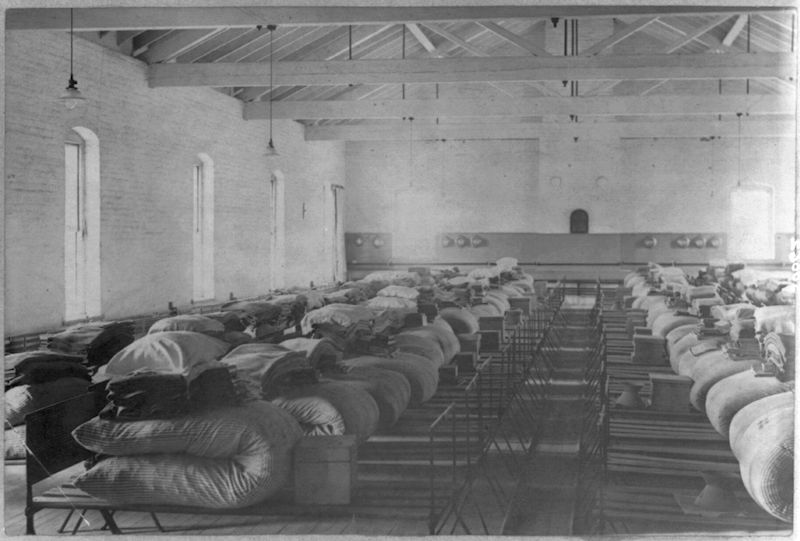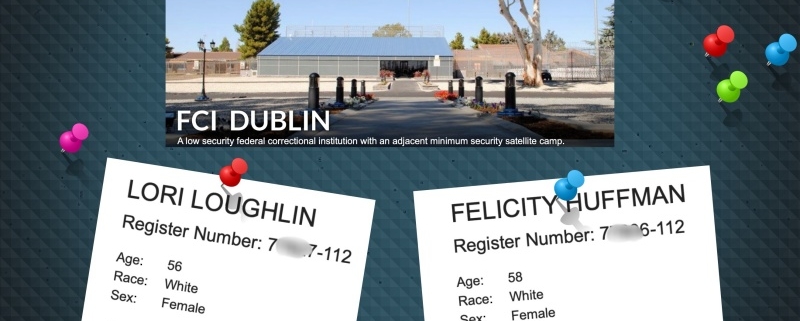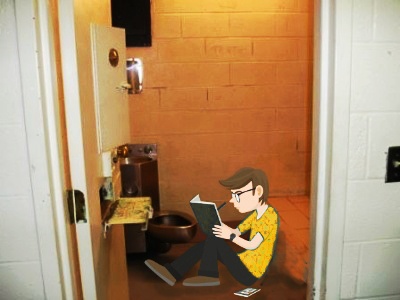Thursday nights were for doing laundry, letter writing, and shoe-shining. However, the Thursday night of this particular week was a bit different because the next day was the first of a three-day furlough for inmate I. Dunnit, 43546-045.
Dunnit was 13 months into a 24 month sentence in federal prison for providing false information to the IRS. He’d been a model inmate since the first day he set foot in the camp located in the California desert. Working as a tool room clerk, he earned the top bonus pay of $.40 per hour on top of his $.12 per hour base salary. He attended regular Toastmasters meetings, sang in the prison choir that occasionally performed in local churches, including the one attended by the warden and his family, and he played on the tennis team that regularly crushed the local Jaycee team whenever they visited the prison to play a friendly match or two on the institution’s top-notch courts.
Getting a furlough approved was a long shot, but not impossible. Still, Dunnit’s counselor, Harry Pitts, a portly man with a set of jowls that hung from the sides of his face like a pair of cheap drapes, thought he could make it happen. Pitts was a kind man who saw a little good in everyone, especially in inmate I. Dunnit.
To secure Dunnit’s 3-day furlough Pitts reeled in a couple of favors, like not telling the warden’s wife about a certain little blonde clerk who spent plenty of time in her boss’s office with the door closed and the “In Conference” sign hanging from a shiny thumbtack on the outside.
The application process had been short and sweet, with the reason for furlough stated as “to re-establish family and community ties.” The other choices on the form seemed better—to attend a religious meeting, attend a court proceeding/hearing, receive special medical or dental care not offered in the prison facility, or to participate in special training or a work detail—but Pitts stuck to his “keep it simple” plan, and it worked. The furlough application was approved and signed by the warden.
So when Friday morning came, Dunnit showered and put on a pair of new jeans, a blue dress shirt, plaid boxer shorts, new Ralph Polo socks, and his favorite pair of New Balance running shoes, the clothing his wife mailed to Pitts a week in advance of the furlough.
At 9 a.m. sharp, the officer working control in the front office called Dunnit’s name over the intercom.
“I. Dunnit, report to the compound office.”
This was it. His wife had arrived to take him away from the concrete, the tool room, and the 999 other inmates who were also working on ways to get away from the camp. Although, it wasn’t so bad at the camp, since many of the prisoners “go over the hedges” at least once a week.
You see, the prison camp has no walls or fences, just a row of decorative and neatly trimmed boxwoods around the perimeter. Two hundred years or so to the south of the compound, there’s a dirt road that leads to the main highway running north to San Jose and south to L.A. The first turn to the left, several miles northeast, is practically a straight shot to Vegas.
Several of the guys leave the prison camp at night, running through the tumbleweeds and dust, dodging scorpions, roadrunners, rattlesnakes, and jack rabbits, to hop inside a waiting car driven by girlfriends, wives, friends, or family. They drive into town to catch a movie, have a nice dinner at a local restaurant, or simply climb into the backseat for a bit of “desert delight.” Sometime just shy of 9 p.m., when the rec yard closes for the night and an hour before count time, the fellows slip back onto the prison grounds with bellies full of steak and wine, eyes red of pot smoke, and the look of satisfaction stamped across their flushed faces. They also bring contraband into the prison, such as wine, weed and other drugs, clothing, food (shrimp, steak, etc.), cellphones, radios, coffee, liquor, and more.
Going over the hedges provides some relief from prison life. But getting away from it all to spend three days at home, walking barefoot in grass, eating home cooked meals, visiting with family, sleeping in a real, soft bed with a significant other instead of on a steel slab covered with a plastic-covered mattress while smelling the guy’s stinky feet in the upper bunk, and even holding a dollar bill and driving a car, well, it would be three days in heaven.
Unfortunately, a three-day furlough ends in … well, three short days. And the drive back to the camp was far too quick. But what a weekend! Saturday, the entire family came over for a barbecue around the pool. The oldest daughter brought her kids who stuck to Grandpa Dunnit like glue. Piggyback rides and hugs. Hamburgers and potato salad. Homemade iced tea and ice cream. Snuggling with the wife. And dignity. He had his dignity back, even if it was for only three short days. No one telling him every move to make. No strip searches. No bending over. No squatting and coughing while guards look at and inspect his most private areas.
Even model prisoners lose their dignity in prison.
But, the moment had arrived and walking back inside the main door to the camp office was tough.
“Welcome back, Dunnit. Have a good time?” said the officer on duty.
“Yeah, it was nice.”
“You see your grandkids?”
“Sure did. They’ve grown quite a bit since I last saw them too.”
“I know what you mean. Mine grow like little weeds.”
Dunnit handed the officer his bag.
“Well, I guess we may as well get this over with. Step inside the restroom and take off your clothes and hand me each piece as you take it off. You’re gonna have to pee in a cup for me too.”
Dunnit slipped off his new clothes, and his dignity, neither of which he’d see again until his release date.

Yes, furloughs are possible for federal inmates. The length of the furlough depends upon the time remaining on their sentence—the less time the longer the furlough. Some furloughs are for an overnight stay only, because the inmates are less than 18 months from their release date.
- The expense of the furlough must be paid for by the prisoner or his family.
- Inmates incarcerated for violent crimes are not eligible to receive furloughs.
- While on a furlough, the inmate may not consume alcohol or drugs. They also may not consume any food item containing poppy seeds, since the seeds often show up on drug screens as a positive result for opiate use. The same normally applies to those who are on supervised probation.
- Some federal inmates are also granted furloughs when transferring from one prison to another.
*Inmate I. Dunnit is a fictional character as is his prison. Prison furloughs, however, are very real.
The first five numbers of a federal inmate’s ID are unique to the prisoner, sort of like a social security number. The last three numbers identify the court district where they were arrested and processed. For example, I. Dunnit’s inmate number is 43546-045. The first five numbers are unique to him. The last three, 045, as you can see in the list below, indicate he was arrested and processed in the Western District of Missouri.
001 – Northern District of Alabama (N/AL)
002 – Middle District of Alabama (M/AL)
003 – Southern District of Alabama (S/AL)
004 – Southern District of Florida (S/FL)
005 – District of the Northern Mariana Islands (D/MP)
006 – District of Alaska (D/AK)
007 – District of Columbia (Superior Court)
008 – District of Arizona (D/AZ)
009 – Eastern District of Arkansas (E/AR)
010 – Western District of Arkansas (W/AR)
011 – Northern District of California (N/CA)
012 – Central District of California (C/CA)
013 – District of Colorado (D/CO)
014 – District of Connecticut (D/CT)
015 – District of Delaware (D/DE)
016 – District of Columbia (DC/DC)
017 – Northern District of Florida (N/FL)
018 – Middle District of Florida (M/FL)
019 – Northern District of Georgia (N/GA)
020 – Middle District of Georgia (M/GA)
021 – Southern District of Georgia (S/GA)
022 – District of Hawaii (D/HI)
023 – District of Idaho (D/ID)
024 – Northern District of Illinois (N/IL)
025 – Southern District of Illinois (S/IL)
026 – Central District of Illinois (C/IL)
027 – Northern District of Indiana (N/IN)
028 – Southern District of Indiana (S/IN)
029 – Northern District of Iowa (N/IA)
030 – Southern District of Iowa (S/IA)
031 – District of Kansas (D/KS)
032 – Eastern District of Kentucky (E/KY)
033 – Western District of Kentucky (W/KY)
034 – Eastern District of Louisiana (E/LA)
035 – Western District of Louisiana (W/LA)
036 – District of Maine (D/ME)
037 – District of Maryland (D/MD)
038 – District of Massachusetts (D/MA)
039 – Eastern District of Michigan (E/MI)
040 – Western District of Michigan (W/MI)
041 – District of Minnesota (D/MN)
042 – Northern District of Mississippi (D/MS)
043 – Southern District of Mississippi (D/MS)
044 – Eastern District of Missouri (E/MO)
045 – Western District of Missouri (W/MO)
046 – District of Montana (D/MT)
047 – District of Nebraska (D/NE)
048 – District of Nevada (D/NV)
049 – District of New Hampshire (D/NH)
050 – District of New Jersey (D/NJ)
051 – District of New Mexico (D/NM)
052 – Northern District of New York (N/NY)
053 – Eastern District of New York (E/NY)
054 – Southern District of New York (S/NY)
055 – Western District of New York (W/NY)
056 – Eastern District of North Carolina (E/NC)
057 – Middle District of North Carolina (M/NC)
058 – Western District of North Carolina (W/NC)
059 – District of North Dakota (D/ND)
060 – Northern District of Ohio (N/OH)
061 – Southern District of Ohio (S/OH)
062 – Northern District of Oklahoma (N/OK)
063 – Eastern District of Oklahoma (E/OK)
064 – Western District of Oklahoma (W/OK)
065 – District of Oregon (D/OR)
066 – Eastern District of Pennsylvania (E/PA)
067 – Middle District of Pennsylvania (M/PA)
068 – Western District of Pennsylvania (W/PA)
069 – District of Puerto Rico (D/PR)
070 – District of Rhode Island (D/RI)
071 – District of South Carolina (D/SC)
073 – District of South Dakota (D/SD)
074 – Eastern District of Tennessee (E/TN)
075 – Middle District of Tennessee (M/TN)
076 – Western District of Tennessee (W/TN)
077 – Northern District of Texas (N/TX)
078 – Eastern District of Texas (E/TX)
079 – Southern District of Texas (S/TX)
080 – Western District of Texas (W/TX)
081 – District of Utah (D/UT)
082 – District of Vermont (D/VT)
083 – Eastern District of Virginia (E/VA)
084 – Western District of Virginia (W/VA)
085 – Eastern District of Washington (E/WA)
086 – Western District of Washington (W/WA)
087 – Northern District of West Virginia (N/WV)
088 – Southern District of West Virginia (S/WV)
089 – Eastern District of Wisconsin (E/WI)
090 – Western District of Wisconsin (W/WI)
091 – District of Wyoming (D/WY)
093 – District of Guam (D/GU)
094 – District of the Virgin Islands (D/VI)
095 – Middle District of Louisiana (M/LA)
097 – Eastern District of California (E/CA)
098- -Southern District of California (S/CA)
Federal Bureau of Prisons (BOP) Furlough Application Form
*Hover mouse over form to use arrows for page scrolling








 My bunkie, the man who slept in the upper bunk above me, was a decent sort of guy. He’d been drafted to play pro sports, but couldn’t seem to leave the drugs alone. Long story short—he got caught with a couple of kilos of cocaine before training camp. Next thing he knew he was living in a concrete building with several hundred men, many of whom had followed his college career on TV. What a shame.
My bunkie, the man who slept in the upper bunk above me, was a decent sort of guy. He’d been drafted to play pro sports, but couldn’t seem to leave the drugs alone. Long story short—he got caught with a couple of kilos of cocaine before training camp. Next thing he knew he was living in a concrete building with several hundred men, many of whom had followed his college career on TV. What a shame.

 *The Wizard of Oz premiered on the big screen in 1939, eventually making its way to television in 1956. Grigsby was behind bars for both. Judy Garland, who played Dorothy in the film, was born in 1922 and died in 1969. Her entire life and career took place during Grigsby’s period of incarceration.
*The Wizard of Oz premiered on the big screen in 1939, eventually making its way to television in 1956. Grigsby was behind bars for both. Judy Garland, who played Dorothy in the film, was born in 1922 and died in 1969. Her entire life and career took place during Grigsby’s period of incarceration.











 So please don’t hesitate to approach a police officer. Of course, you may have to extend an offer of a cup of coffee to start the ball rolling, but after that, hold on because your mind will soon be filled with real-life tales of car chases, shootouts, drug raids, puking drunks, and struggles with the biggest and baddest bad guys who ever walked a dark alleyway. Of course, you should probably avoid weird and scary opening lines, such as, “Hi, my name Wendy Writer and I’m wondering if you would please tell me how to kill someone and get away with it?” Or, “Hi, my name Karla Killer and I’d really like to hold your gun so I can see how heavy it is.”
So please don’t hesitate to approach a police officer. Of course, you may have to extend an offer of a cup of coffee to start the ball rolling, but after that, hold on because your mind will soon be filled with real-life tales of car chases, shootouts, drug raids, puking drunks, and struggles with the biggest and baddest bad guys who ever walked a dark alleyway. Of course, you should probably avoid weird and scary opening lines, such as, “Hi, my name Wendy Writer and I’m wondering if you would please tell me how to kill someone and get away with it?” Or, “Hi, my name Karla Killer and I’d really like to hold your gun so I can see how heavy it is.”
